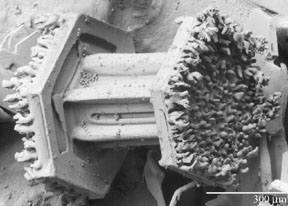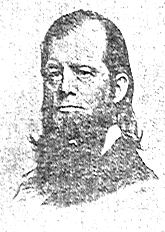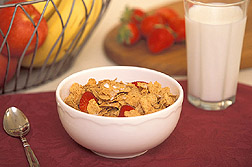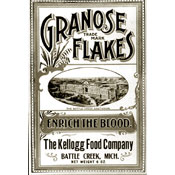Sorry there aren't more pictures, but I could find only a few photos from 1974.
- In June of 1974, the Cleveland Indians were having the worst of seasons. They were in last place and had been for the past five years. Attendance was at its second-lowest since World War II. Desperate times called for desperate measures.

Even though the Indians had a few good players -- like Dick Bosman shown here pitching a no-hitter in 1974 -- the team as a whole couldn't win, and nobody was coming to watch them play. Note the empty seats in the background.
(AP Photo posted at the Examiner)
- So the Indians owner decided to offer Stroh's beer at 10 cents per 10-ounce cup. Other teams had offered cheap beer nights and it seemed to work pretty well for them, so why not for Cleveland?
- The week before this fateful game, Cleveland was in Texas, playing the Rangers. The Rangers' stadium happened to be one of those parks offering cheap beer. The Rangers also sucked that year, and the teams more or less took out their frustration on each other.
- In short, a Ranger player slid hard into an Indians fielder. An Indians pitcher threw close at a Ranger batter's head. Next pitch, the Ranger batter bunted back to the pitcher, shoved the pitcher, and was knocked down in return by the Indians' first baseman. Benches cleared, melee ensued.
- While the teams were fighting, the Indians players realized that Ranger fans were throwing their beers down onto them from the stands.
- The following week, on June 4, the Rangers came up to Cleveland to play a three-game series. This same night was the inauguration of the 10-cent beer night. Previous attendances had hovered around the miniscule 8,000 mark. But this particular night, some 25,000 people showed up. A few say that some fans arrived already intoxicated and ready to exact revenge. But I don't suppose it would take more than $1 for just about everybody to get up to speed, so to speak.
- Pre-game: Fans were setting off fireworks from their seats. Texas manager Billy Martin delivered his line-up to the umpire and was booed. In reply, he tipped his cap and blew kisses to the crowd.

Billy Martin managed the Texas Rangers from 1974 to 1975. He went on to manage several other teams, including the Oakland A's and the New York Yankees.
(Photo from Sports Encyclopedia)
- Inning 1: Several smoke bombs went off in the stands.
- Inning 2: A large woman jumped down from the fans into the Indians' on-deck circle, lifted her shirt, and tried to kiss the umpire, Nestor Chylak.

Umpire Nestor Chylak was inducted into the Baseball Hall of Fame in 1999, seventeen years after his death.
(Photo from jimpoz.com)
- Inning 4: A Ranger outfielder hit his second home run of the game, but as he circled the bases, a naked man from the stands ran onto the field and slid into second base.
- Inning 5: Father and son jumped into the infield and mooned the crowd.
- Inning 6: Fireworks were shooting toward the Texas dugout. Cleveland fans were hurling anything and everything down onto the field: beer cups, golf balls, rocks, batteries, etc.
"I remember getting spit on a lot and having a lot of hot dogs thrown at me. Somebody threw a gallon jug of Thunderbird wine at me." --Mike Hargrove, Rangers Rookie of the Year in 1974 and current Indians manager
- Inning 7: Rangers pitchers retreated from the bullpen and stayed in the dugout.
- Innings 7 and 8: Fans regularly jumped down into right field where Ranger player and American League MVP Jeff Burroughs was stationed. They wanted to say hello to the MVP and shake his hand. Security people escorted these fans off the field, but there weren't really enough security forces to restrain the numbers of people jumping onto the field.
"You can't pull back uncontrollable beasts. The last time I saw animals like that was in the zoo." -- Umpire Nestor Chylak
- Inning 9: Cleveland was down 5-3. Despite all the projectiles and the occasional fan rushing the field, Cleveland managed to score two runs and tie the game. More fans ran onto the field in celebration. Then someone tried to steal Burroughs' glove for a souvenir. Reports vary about whether the fan was able to get the glove away from Burroughs or not. The fan punched Burroughs; Burroughs punched back.
- In reply, nearby drunk and angry fans jumped onto the field, swarming around Burroughs. Some still in the stands wrenched their chairs out of their bearings and threw them onto the field, aiming for Burroughs.
- Texas Rangers manager Billy Martin (known to show his temper now and then) grabbed a bat and said to his team, "Let's get 'em, boys," on his way out of the clubhouse. When Martin and his team rushed the field, thousands of fans streamed out of the stands.

Ranger teammates circling Burroughs, trying to protect him from the fans
(AP Photo sourced from Evening with Sabs)
- Utter chaos. Teams fought with the fans on the field and tried to duck flying chairs and other projectiles. The fans fought with each other, with the Rangers, with the Indians, with the police. They threw a chair at an Indians pitcher, and they hit the umpire with a folding chair. Martin's bat was later recovered, broken.
"The only thing I can compare it to was when I was covering riots in Venezuela and there were guys with Uzis running around." -- photographer Ron Kuntz

The now-iconic image from that night; an umpire restrains a fan injured during the 9th inning chaos
(AP Photo sourced from Evening with Sabs)
- Chylak, the umpire who had been struck by a chair, waited until all the Rangers players were off the field -- escorted by the Indians players -- and then he called the game a forfeit to Texas, 9-0.
- About 65,000 cups of beer had been consumed in four hours.
- A mere nine fans were arrested.
- The Indians' ownership had no plans to cancel 10-cent beer night until after the American League president said it would be a bad idea to do that again, remarking, "There was no question that beer played a great part in the affair" of June 4, 1974.
- All cheap beer nights were subsequently banned from all professional baseball stadiums.
So the next time you're enjoying a beer at your favorite professional ball game but you're not enjoying the price, raise your cup and say, "Thanks, Cleveland!"
Sources
James G. Robinson, 10-Cent Beer Night BaseballLibrary.com
"Hangover looms from beer melee," Holland Senitinel, June 4, 1999
Bobby Smiley, "Another Mistake By the Lake," Artmuck, July 30, 2004
Everything2.com, Major League Baseball Forfeits, July 17, 2004
Coffeyville Whirlwind, This Week in Baseball History: Ten Cent Beer Night
Deadballera, Obit for Nestor Chylak
Baseball Hall of Fame, Induction Speeches, Nestor Chylak






















